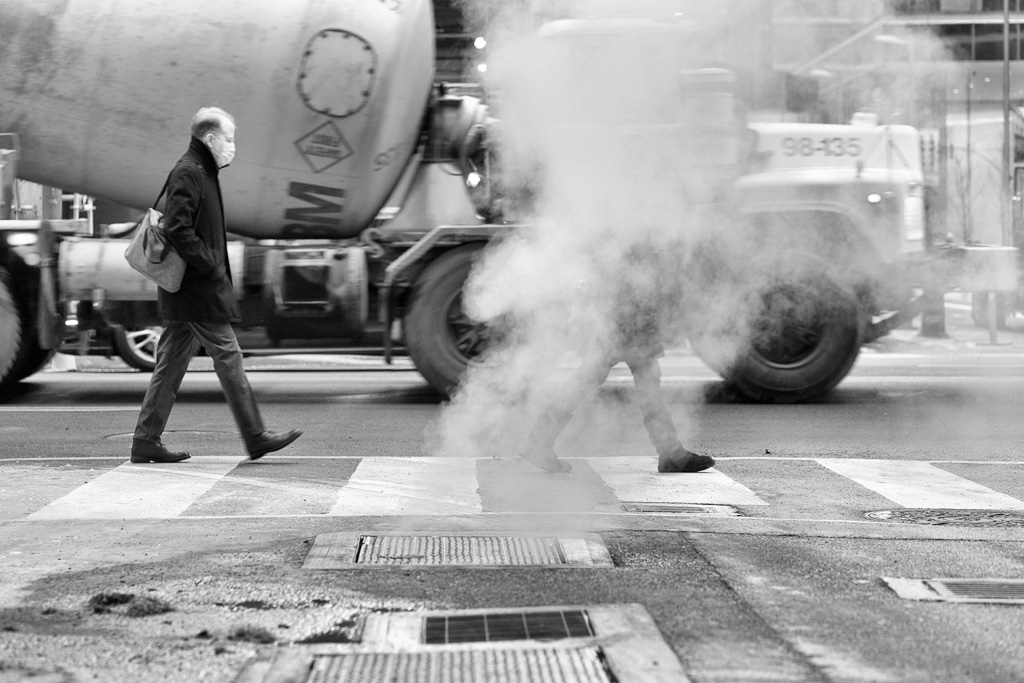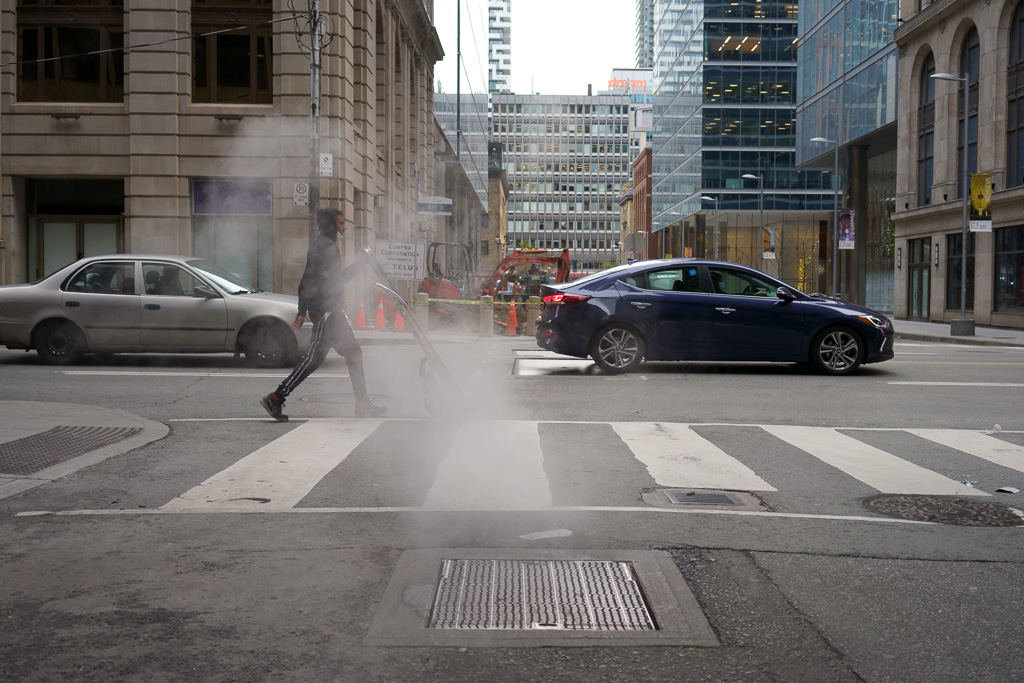When he showed up at the office ten minutes late on a Monday morning, everyone noticed. They didn’t notice that he was ten minutes late; they noticed his general appearance. No one came right out and said: Geez, dude, you look wasted. Instead, they stabbed him with their judgmental, Puritanical stares and that was as good as coming right out and saying what he already knew. He’d seen it reflected back at him in the subway window as he rode to work: the bags under the eyes, the coarse stubble that made him look apathetically desperate, the tie that never quite settled into place. All in defiance of the office ethos and its strict professionalism. But most striking of all was the shock of white hair. On Friday afternoon, he’d left the office with a thick head of dark brown hair, and on Monday morning, he’d shown up with the scalp of a man thirty years his senior.
His office colleague (the one people assumed was his friend) approached and put an arm around his disappointing shoulders: Geez, dude, you look like you’ve seen a ghost.
That is precisely what had happened, but he was afraid to say anything. The ghost had arrived at midnight, teetering on the fulcrum between Sunday and Monday. He wasn’t sure whether he was awake when the disparate wisps coalesced at the foot of his bed or whether he’d been dreaming when it first assumed its form. He had thought the ghost was there to scare the bejeezus out of him since scaring people seems to be the point of ghosts. But things didn’t play out that way. They shot the shit for a while—this and that—and things grew comfortable enough that he excused himself to get a beer from the fridge. When he returned, he found that the ghost had cracked a cold one, too, and was lounging with its feet up on the spare night stand.
He wasn’t Roman Catholic, so he couldn’t be sure, but he’d say the ghost was in a limbo situation. At one point, the ghost mentioned the bardo, but that could’ve been the brand of beer. Limbo. Bardo. Whatever you call it, the ghost had unfinished business on this plane and he expected that, as the night progressed, the ghost would ask for help concluding whatever it had to conclude in order to release itself from its entrapment in the netherworld. But the request never came. The ghost had another drink, and then another and another. The ghost was having too much fun to ruin it with talk of unfinished business, preferring instead to ramble on about the joys of a full life, the love of a good woman (or man, as the case may be), the passionate pursuit of interests, a deep curiosity about the world at large.
As the earliest light began to unfurl itself across the city, he interrupted the ghost and asked: but aren’t you going to frighten me, you know, say boo or something?
The ghost laughed and swung its feet from the night stand: Really? You want me to say boo?
The ghost excused itself to take a piss and when it came back it said: You know, I’ve been thinking about what you asked and, to be honest, you don’t need me to say boo. You have enough to be afraid of as it is.
As the first light slipped through the cracks in the window shade, the ghost vanished. He was angry. This was the best the ghost could do? He’d stayed up all night, talking, drinking, baring his soul to an apparition. And this? This? He slapped on a rumpled shirt and didn’t bother to shave. He skipped breakfast and ran to the subway station. Riding into the office, he stared at his reflection and noted that he looked like hell. He rode the elevator to the 33rd floor, coffee in hand, and steeled himself for his office job, noting the semantic detail that he didn’t actually work in an office, but in an interior cubicle with no view of anything except a stupid screen saver of his employer’s corporate logo jittering across the monitor.



